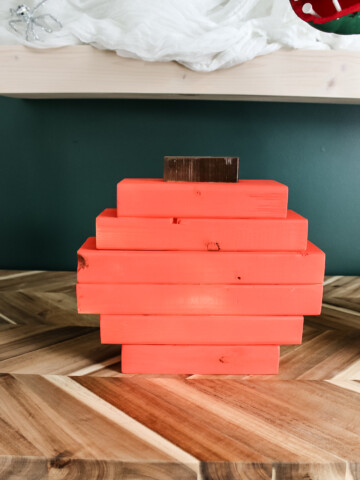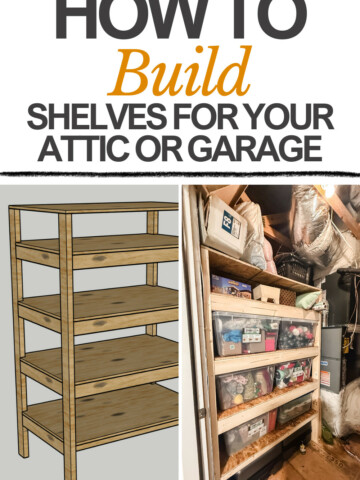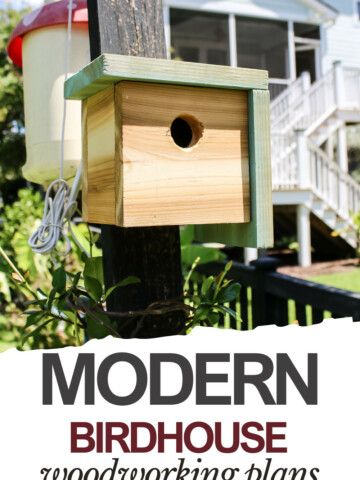Need to patch damaged wood? Let's compare the make up and functionality of Bondo vs wood filler to see which is best for your patch job!
Repairing damaged old furniture can be a really satisfying project.
Whether you are flipping furniture to sell or just trying to repair a family heirloom, you might need to fill large or small cracks and holes in wood.
Two of the most common options for wood repairs are wood filler and Bondo.
Let's talk about these two patching products to help decide which might be best for your next project!
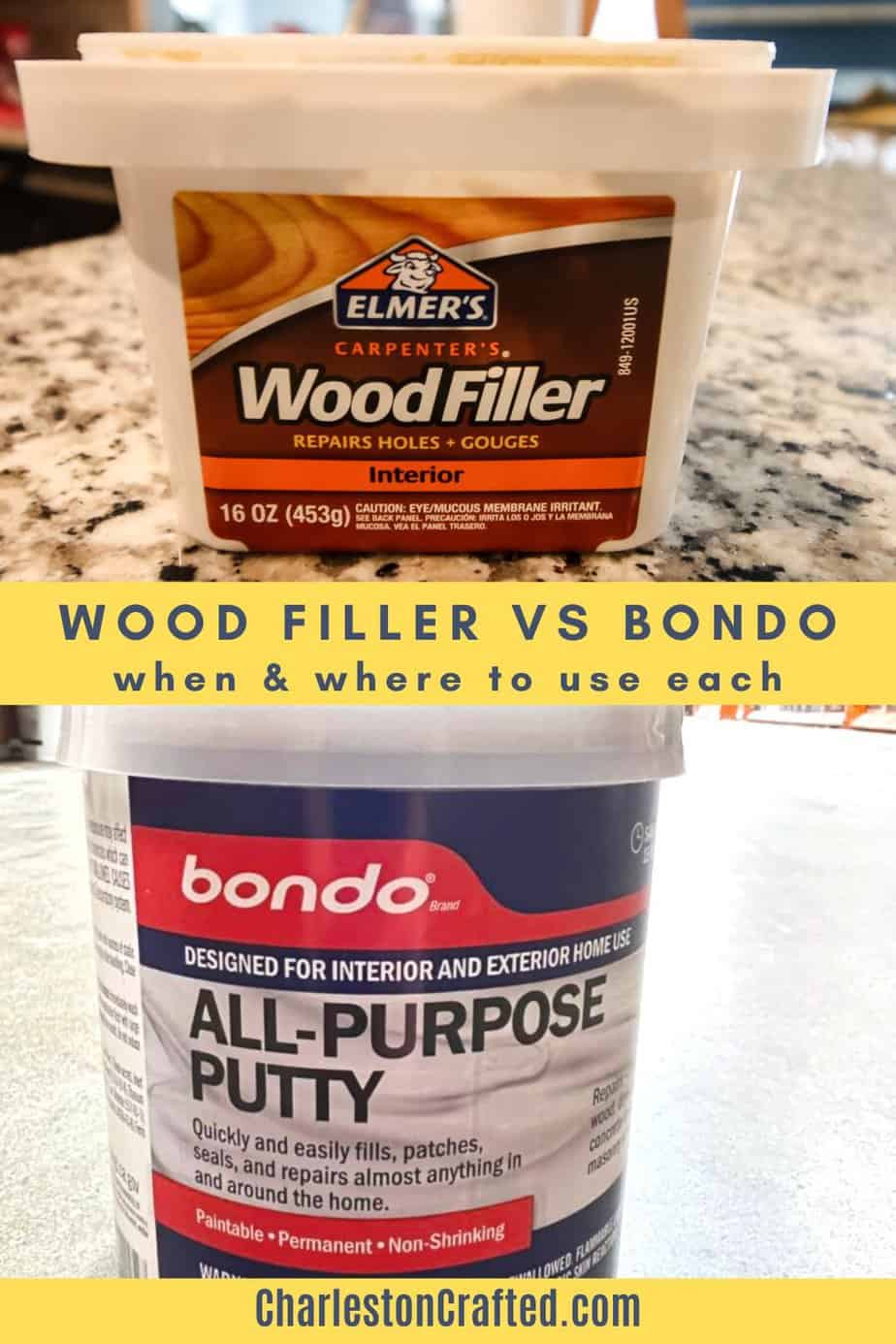
Understanding Bondo
Bondo is actually a brand name. But, much like "kleenex" has become a common name for tissues, "Bondo" usually refers to their all purpose putty.
While it was actually designed for automotive repairs, Bondo can absolutely be used on wood projects.
Bondo is primarily designed for non-wood applications, and while it can be used on wood, it may not be the best choice for projects where aesthetics and stain-ability are important.
Bondo is a two-part putty compound made from polyester resin and a hardening agent, typically a cream hardener.
Bondo is incredibly hard and durable once dry, making it a super popular option for repairs.
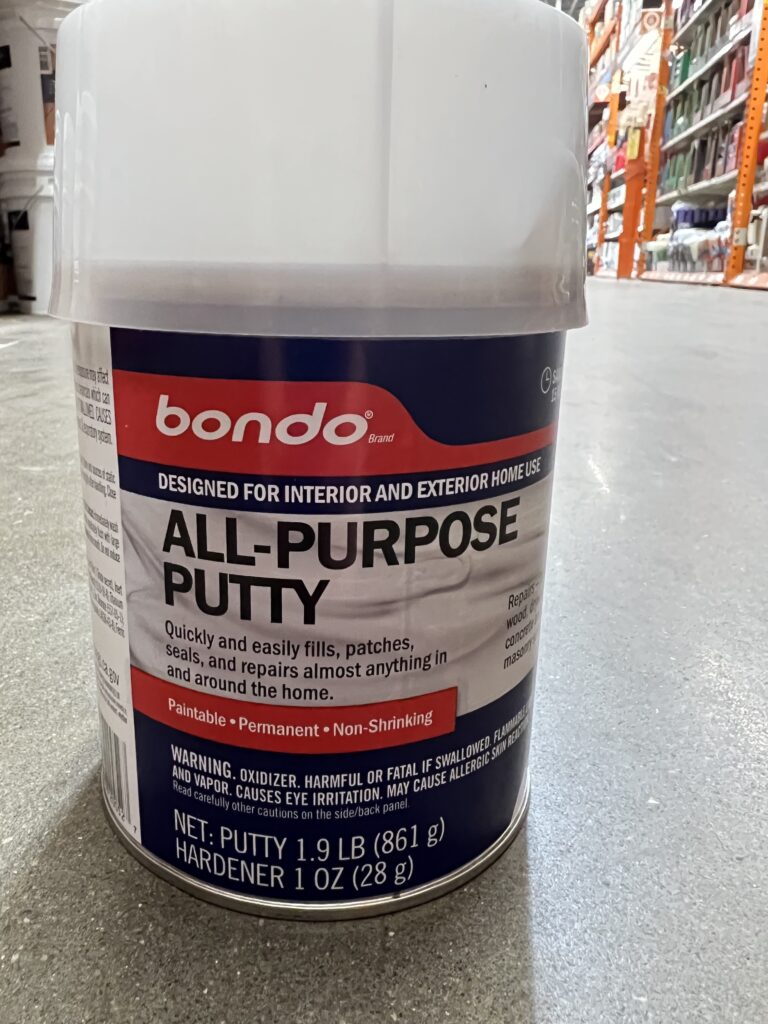
Benefits of Bondo
- Super strong and durable
- Quick drying - great for rapid repairs
- Works on a variety of surfaces including wood, metal, and fiberglass
Types of Bondo
- All-Purpose Putty: works on many materials, quick drying, strong.
- Lightweight Body Filler: lighter weight version made with fiberglass. Good when weight is important.
Bondo drying + cure time
- Specific drying time varies by product - always consult your package's label.
- Humidity and temperature can effect the dry time.
- Generally, Bondo should be dry to the touch in 30 minutes. It may take 1-3 hours to fully cure.
- Once it has cured, it can be sanded.
Understanding Wood Filler
Wood filler is a patching product that was designed specifically for wood surfaces. It is made from saw dust/tiny wood particles mixed with a binding agent: epoxy, latex, or cellulose.
Use wood filler to patch flat cracks or gaps in molding. The wood filler does a better job of smoothing flush because it is made to fill in flat gaps and joints on wood.
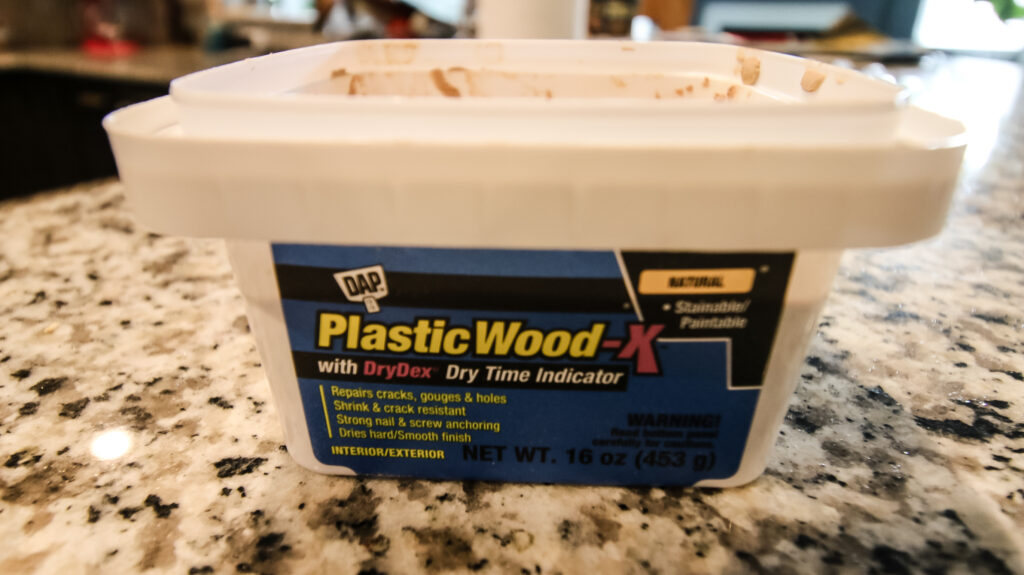
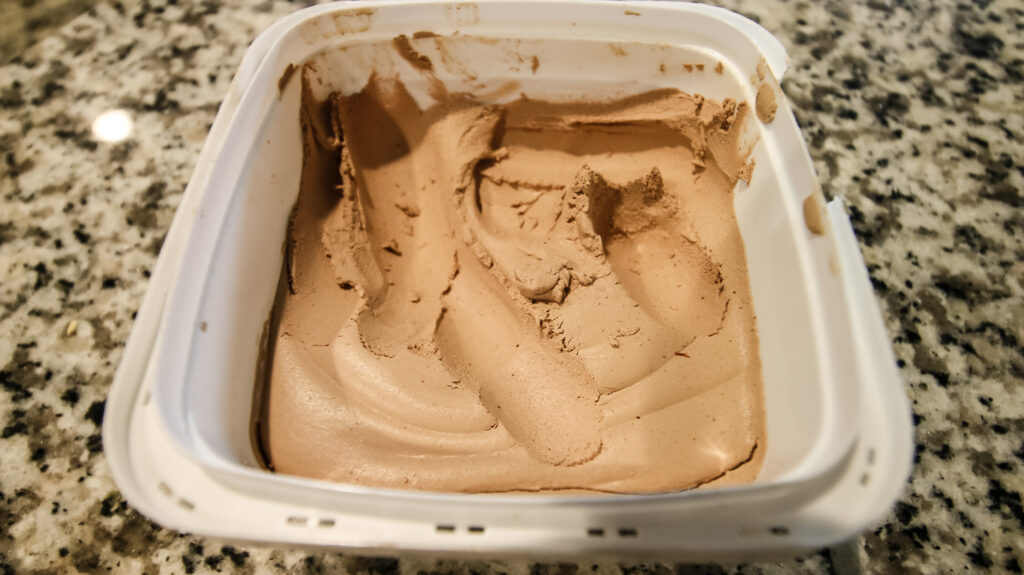
See our 4 favorite wood fillers compared side by side here!
Benefits of Wood Filler
- Ideal for repairing cracks, dents, and gouges in wooden furniture, trim, and flooring.
- Provides a strong bond with wood and is less likely to shrink or crack over time.
- Can be sanded, stained, and painted to blend seamlessly with the surrounding wood.
Types of Wood filler
- Water-Based Wood Fillers: easy to use, environmentally friendly, easy clean up, quick drying, low odor and low VOC
- Solvent-Based Wood Fillers: made with acetone or mineral spirits and very durable, longer dry time, can use outdoors.
- Wood Epoxy Fillers: two part system that has to be mixed. Very stinky. Long cure time. Very strong and weather proof once dry.
Wood filler drying + cure time
- Dry time varies by brand + specific product - always consult your can or bottle for proper dry time.
- In general, water based wood fillers dry quickly, solvent and epoxy based wood fillers dry slower.
- Temperature and humidity levels can effect dry time.
- Cure time is how long it takes wood filler to reach it's maximum hardness. Even if it is dry to the touch, it might not be fully cured.
- Water based fillers cure in a few hours, while others can take much longer. Check the back of the can and be sure your project is cured before handling it!
Best Uses of Bondo
Bondo is ideal for:
- Rebuilding and repairing significant wood damage, such as rotted or missing sections.
- Filling deep holes and gaps in wood.
- Structural repairs where maximum strength and durability are needed.
- Repairing large cracks or damage to veneer.
- Repair high-traffic areas like corners of drawers or tabletop edges.
Best Uses of Wood Filler
Wood filler is best for:
- Repairing larger gaps, cracks, and damage to wood surfaces.
- Molding new edges or corners for tabletops.
- Repairing gouges or gaps in wood floors.
- Preparing wood surfaces for staining, painting, or refinishing.
- Suitable for both interior and exterior wood projects.
Differences in Application
While these products are very similar, there are some differences in how they are applied.
Bondo
Overall, Bondo is just a bit more involved to apply than wood filler. It's not super difficult, but it is more of a process.
Remember that Bondo is going to have a stronger odor and you should work outdoors with it or wear a respirator.
Bondo requires precise mixing of the two components to achieve the correct consistency. Once it is mixed, it applies smoothly and requires minimal sanding after drying.
You will find that Bondo starts to harden quickly, so it's best to work in small areas. That fast drying time is great, but it's not great if it dries up halfway through filling your holes!
Bondo is ideal for larger repairs and rebuilding damaged wood.
Wood Filler
Wood filler is typically applied with a putty knife or a caulking gun for larger repairs. It's really easy to apply, let dry, and sand smooth.
Remember that wood filler often shrinks as it dries and the wood expands and contracts. So, it's best to overfill and plan to sand once it is fully dried.
It requires ample drying time and usually needs significant sanding for a smooth finish.
But, wood filler can be stained or finished to match the surrounding wood exactly!
Bondo vs Wood Filler - which should I use?
If you are repairing a wood surface and want to stain it to still look like wood - wood filler is best.
For wood that is significantly damaged or rotten, Bondo will create a stronger bond for the wood restoration.
If you are repairing metal or fiberglass, you will absolutely want to use Bondo.
Bondo can be used to repair damaged wood, it just will not have the same stainable wood-look that wood filler has.
Any more questions about Bondo vs Wood Filler?
Looking for something?
We've been doing this since 2012 so we have a LOT of blog posts!
Search stuff like: Ceiling Projects | DIY Plant Stands | Thrift Flips


Hello, I'm Morgan, half of the creative force behind CharlestonCrafted.com! With a passion for DIY that dates back to 2012, I've transformed three homes and now I'm dedicated to helping others craft their dream spaces. Let's turn your house into a home together!


